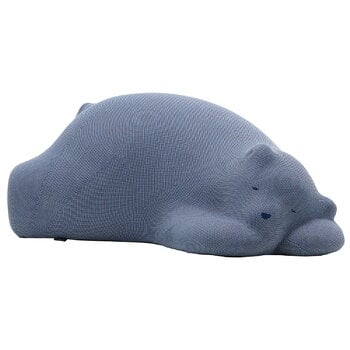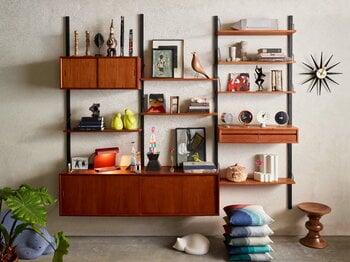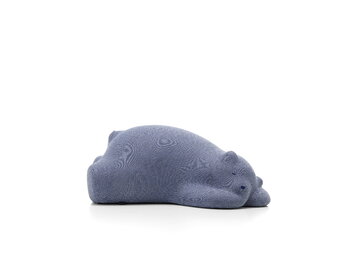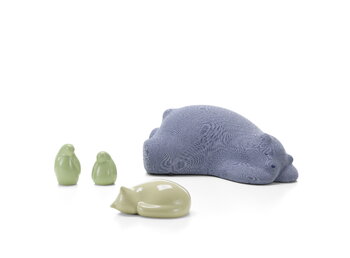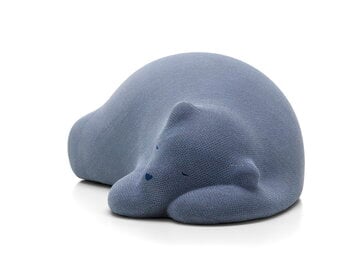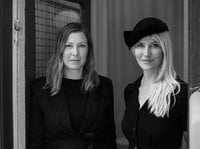Resting Bear by Vitra is a friendly and lovable creature with a knitted surface. Besides a decorative piece, Resting Bear functions as a stool, ottoman, backrest or multifunctional children's furniture.
Designed by the Swedish Front for Vitra, the Resting Animals are characterized by a sleepy and smiling feeling and well-thought design. The collection resulted from a research project where Front asked people to name some of their most emotionally enriching and meaningful objects – majority of answers were some kind of animal figures. In their previous works Front has observed sleep and hibernation of animals. The Resting Animals combine these two themes into visually pleasing objects that surround themselves with experiences of joy, tranquillity and companionship.

